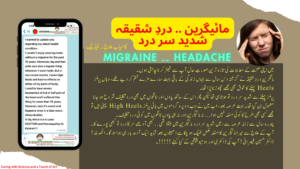Irritable Bowel Syndrome (IBS) is a functional disorder that affects around 10-20% of the population1, with the condition affecting women three times more than men2. For practitioners of ingestive medicine, it’s relatively common to be consulted by people with this complaint. Up until fairly recently, IBS was a diagnosis of exclusion, i.e., those presenting to a GP or specialist with abdominal pain and an alteration of bowel habits, in the absence of an identifiable organic pathology, were usually told that they had IBS. Since then, IBS has become a recognised clinical entity, with the following diagnostic criteria:
- Abdominal distension (bloating).
- Diffuse lower abdominal pain, noticed particularly in the lower left quadrant. Pain is usually reported as a constant dull ache with occasional episodes of acute sharp pain. Eating may precipitate this pain and it’s often relieved by defecation. For diagnostic purposes, the pain described here should have been present for at least 3 days per month during the previous 3 months.
- Altered bowel habits, consisting of constipation, diarrhoea, or an alternation between the two, including defecation urgency, particularly after a meal.
Other symptoms that are consistent with a diagnosis of IBS include nausea, vomiting, dyspepsia, a sensation of incomplete evacuation, and mucorrhoea. Symptoms may be aggravated by stress and in women, may become worse before a menstrual period. There are four variants of IBS:
- IBS-A (alternating constipation and diarrhoea).
- IBS-C (primarily constipation)
- IBS-D (primarily diarrhoea)
- IBS-M (a mixture of constipation and diarrhoea).
Interestingly, most people change their IBS variant within 12 months of the onset of symptoms.
While it may be tempting to label a person with the above-mentioned symptoms as a person with IBS, this diagnosis should only be made by a suitably qualified person, as these symptoms may also be seen in various inflammatory bowel diseases, food intolerance (particularly to lactose or fructose), gastrointestinal infections with organisms such as Clostridium difficile or Giardia, thyroid disease, and a number of different cancers.
The orthodox medical management of IBS commonly consists of the use of dietary fibre, polycarbophil compounds, anticholinergics, antispasmodics, antidepressants, a FODMAP (fermentable oligosaccharides, disaccharides, monosaccharides, and polyols) exclusion diet, as well as a lactose and fructose exclusion diet.
Natural medicine practitioners commonly advise clients with IBS to use probiotics, glutamine, psyllium, melatonin, curcumin, Vitamin D, Aloe vera, peppermint oil, Brahmi, Cat’s claw, Artichoke leaf or Slippery elm, and similar dietary restrictions to those referred to above.
The homeopathic treatment of a person with IBS is typically based on the use of a homeopathic medicine that’s been selected on the basis of a similarity between the signs and symptoms of the client, and the homeopathic proving symptoms of the medicine. This medicine selection process, otherwise known as homeopathic repertorization, is designed to guide the prescriber to a very specific medicine prescription yet it often brings up one or more of a recurring group of medicines, and a brief discussion of each of these medicines follows.
Sulphur
Sulphur is often useful in cases where the person suffers from diarrhoea with an urgent need to pass stools soon after waking in the morning, often at around 5 a.m. A difficulty in passing stools may occur at other times of the day, with hyperacidity, abdominal colic after drinking, offensive flatulence and offensive belching, often reported. There may be anal and other pruritis, with most symptoms having a burning character. Dry skin and red orifices may also be present. The person requiring Sulphur will typically desire sweet foods, have adverse reactions to milk, be irritable, forgetful, experience back pain and appear to have bad posture. Most ailments are inclined to relapse. Symptoms are worse when standing for prolonged periods, and better from lying on the right side or drawing in the legs.
Colocynthis
The Colocynthis type of person often appears to be angry or irritable. In this instance, diarrhoea, abdominal distension and severe cramping or cutting lower abdominal pain that’s relieved by pressure or bending double, may be noted. A bitter taste in the mouth may be reported, along with great hunger, muscular cramping (particularly of the calves), twitching, gall bladder disturbances and back pain. Symptoms are worse from suppressed anger or irritability, a bowel movement, from eating fruit or drinking water, anger or irritation, and better from hard pressure and warmth.
Argentum nitricum
A watery, flatulent, offensive, diarrhoea which occurs immediately after eating or drinking, or which is associated with emotion, is usually seen here. Anxiety or ailments from mental exertion are often associated with these issues and the sufferer may have a marked desire for sweet food. The person may appear to be nervous, fearful, forgetful, hurried and impulsive. Nausea, vomiting of mucoid materials, belching, abdominal distension, lower left quadrant abdominal pain, flatulence, a sense of an epigastric “lump”, and bloating may be found, and disorders of blood sugar may be present. One of the characteristics here is that pains increase and decrease slowly. Symptoms are worse from warmth, cold or sweet food or at night, and are better from pressure, cold and belching.
Lycopodium
In this case, constipation and diarrhoea are frequently alternating. There may be indigestion, heartburn, borborygmi, nausea, as well as abdominal pain and distension that’s worse at the end of, and immediately after, eating. The abdominal pain and distension is not relieved by the passage of flatus. Pains tend to travel from right to left and come and go suddenly. There’s often a sense of heaviness in the abdomen after eating and a dislike of tight clothing. The person is usually thirstless with a dry mouth and halitosis, and may appear to be sensitive, apprehensive and forgetful. There may be a history of liver or kidney disorders, poor circulation and digestive weakness, a desire for hot food and drink as well as sweet foods, and the appetite may be increased to the point where the person may remark on having to get out of bed in the middle of the night to eat. Symptoms are worse on the right side, from heat, between the hours of 4 and 8 p.m., and from consuming beans, cabbage or onions. Symptom improvement may occur with rubbing the abdomen, consuming warm drinks, exposure to cold, or being uncovered.
Nux vomica
Nux vomica can be useful for those reporting constipation with the passage of small quantities of stool, colicky abdominal pain that occurs an hour after eating, flatulence, cramping, heartburn, bitter belching, and abdominal distension that occurs after eating. There may be insomnia, a history of liver congestion, overeating, stress, or overwork. The person in question may appear to be irritable, chilly, impatient, and sensitive to light, odours and noise. There’s often a desire for alcohol, coffee, cigarettes, spicy foods and stimulants generally. Symptoms are worse from eating, from stress, anger, alcohol, stimulants and spicy foods. Symptoms are improved by strong pressure, from a nap, from consuming hot drinks and passing flatus.
Natrum carbonicum
The pointers to Nat carb include indigestion, heartburn, belching, abdominal distension, flatulent diarrhoea, dairy intolerance and a bitter taste in the mouth. There’s often a sudden desire to pass stool and the sufferer may express a craving for potatoes and sweet foods. The person may present as mentally and physically weak, sensitive, and depressed. Symptoms are worse from milk, sitting, mental exertion or a change in the weather, and better from physical movement.
Natrum muriaticum
The usefulness of Nat mur is often indicated by constipation with straining to evacuate the bowel, dry, crumbling stools, indigestion, heartburn, abdominal cutting or cramping pain, abdominal distension, fatigue, dry mucus membranes, hiccoughs and a hypersensitivity to external stimuli. The person may be excessively thirsty, with a dry mouth and a salty or bitter taste, and have a desire for salty or starchy foods. Feeling of incomplete evacuation may be described. There may be a history of fluid retention or endocrine disorders. The person may appear to be quiet, shy, sensitive, irritable or depressed. Symptoms may be worse mid-morning, lying down and from mental exertion. Symptom improvement may arise from lying on the right side, tight clothing, exposure to open air or cold bathing.
Aloe
The need for Aloe may be indicated by the presence of uncontrolled flatulent diarrhoea which is worse after eating or drinking, an accelerated gastrointestinal transit time, abdominal pain particularly around the umbilicus, bloating, nausea, belching, a bitter or sour taste in the mouth, and flatulence after eating. The abdominal pain often occurs before and during a bowel movement but diminishes after the event. A bearing down sensation in rectum may be reported and there may be a feeling of a loss of muscular power in the anus. The stool is often watery or mucoid. There may be a history of liver congestion and fatigue. Symptoms may be worse in the early morning and from eating or drinking, and better from cold.
China
China will frequently be of use where there is a thin liquid diarrhoea of undigested food, fatigue, vomiting of undigested food, abdominal distension, flatulence and belching, borborygmi, and darting, flatulent colicky abdominal pain. The digestive processes in this instance are often quite slow. Symptoms are periodic and there may be a bitter taste in the mouth. Symptoms are worse from fruit, beer or tea, at night and after eating, and from light touch. Symptoms are better from warmth, hard pressure or bending double.
Alumina
Dryness is a common feature of the Alumina constitution and is often associated with the signs and symptoms seen in those suffering from IBS. There is commonly constipation with a difficult passage of hard, dry stools, belching, heartburn, poor appetite, left-sided colicky pain and a feeling of an inactive rectum. There may be dryness of mucus membranes and skin, and a sluggish metabolism. The person may appear to be depressed, confused, impatient and moody Symptoms are worse in the morning or afternoon, or from potatoes, and better in the evening, in the open air or in damp weather.
Carbo veg
Cramping abdominal pain associated with excessive bloating with offensive diarrhoea, morning nausea and heartburn, are the predominant features here. The digestive processes may appear to be slow and most symptoms arise soon after eating. Most foods cause excessive flatulence and belching. There may be fatigue, bodily coldness, venous congestion, and a white or yellow coating of the tongue. Symptoms are worse half an hour after eating, worse from fatty foods, milk or coffee, and better from belching, passing flatus, from bending double and from exposure to cold.
Antimonium crudum
Antimonium crud can be of assistance to those IBS sufferers with an alternation between constipation and diarrhoea, flatulence, mucoid stools, heartburn, nausea, vomiting, indigestion or bloating after eating, and a thick white coating on the tongue. The person may appear to be Irritable and may report a diminished appetite. The symptoms seen here are usually worse from consuming bread or alcoholic drinks, worse from heat, in the evening, and better from rest.
Pulsatilla
The Pulsatilla picture is characterised by a changeability of symptoms. For those presenting with IBS, there may be alternating constipation and diarrhoea, nausea, vomiting, indigestion, heartburn, flatulence, nocturnal borborygmi, belching and colicky epigastric pain. The person may mention that he or she has no thirst, a dry mouth, and a loss of taste or a bitter taste in the mouth in the morning. Halitosis may be noticed. The person may appear to be shy, quiet, mild mannered, depressed and teary, anxious or moody. Symptoms may be worse from rich, fatty foods, dairy products, tea, fruit. They may also be worse from heat, at night or an hour or so after eating, or from lying on the left side. Symptom improvement may be seen with physical movement, from cold applications, the consumption of cold food or drink, or from exposure to fresh air.
Calcarea carbonica
Cal carb may elicit a positive response from IBS sufferers reporting a sour taste in mouth, alternating constipation and diarrhoea, bloating, a cutting spasmodic epigastric pain that occurs after eating, heartburn, belching, flatulence, and vomiting of ingested material. There may be a ravenous hunger with a desire for indigestible food, eggs, salty and sweet food, as well as easy perspiration and sweating while asleep. The person may appear to be anxious, forgetful, chilly and have a cold body. Halitosis may be noticed and there may be a thirst for cold drinks. Symptoms are worse from cold or damp, from mental or physical exertion, mental stress, milk, from eating, pressure, cold or standing upright, and better from lying on the painful side.
(Robert Medhurst is the author of The Concordant Clinical Homeopathic Repertory, which was formed entirely from clinically confirmed remedies.)
References
- Spiegel BM, et al. Is irritable bowel syndrome a diagnosis of exclusion?: a survey of primary care providers, gastroenterologists, and IBS experts. Am J Gastroenterol. 2010 Apr. 105(4):848-58.
- Brandt LJ, et al. An evidence-based position statement on the management of irritable bowel syndrome. Am J Gastroenterol. 2009 Jan. 104 Suppl 1:S1-35.





